Becoming Steve Jobs: The Evolution of a Reckless Upstart into a Visionary Leader
by Brent Schlender (Author), Rick Tetzeli (Author), George Newbern
There have been many books - on a large and small scale - about Steve Jobs, one of the most famous CEOs in history. But this book is different from all the others.
Becoming Steve Jobs takes on and breaks down the existing myth and stereotypes about Steve Jobs. The conventional, one-dimensional view of Jobs is that he was half genius, half jerk from youth, an irascible and selfish leader who slighted friends and family alike. Becoming Steve Jobs answers the central question about the life and career of the Apple cofounder and CEO: How did a young man so reckless and arrogant that he was exiled from the company he founded become the most effective visionary business leader of our time, ultimately transforming the daily lives of billions of people?
Drawing on incredible and sometimes exclusive access, Schlender and Tetzeli tell a different story of a real human being who wrestled with his failings and learned to maximize his strengths over time. Their rich, compelling narrative is filled with stories never told before from the people who knew Jobs best and who decided to open up to the authors, including his family, former inner circle executives, and top people at Apple, Pixar, and Disney. In addition Brent knew Jobs personally for 25 years and drew upon his many interviews with him, on and off the record, in writing the book. He and Rick humanize the man and explain, rather than simply describe, his behavior. Along the way the book provides rich context about the technology revolution we all have lived through and the ways in which Jobs changed our world.
Schlender and Tetzeli make clear that Jobs' astounding success at Apple was far more complicated than simply picking the right products: he became more patient, he learned to trust his inner circle, and he discovered the importance of growing the company incrementally rather than only shooting for dazzling, game-changing products.
Forum on trading, automated trading systems and testing trading strategies
Something Interesting to Read April 2014
Sergey Golubev, 2014.03.31 05:59
Trades About To Happens : A Modern Adaptation Of The Wyckoff Method
While Richard Wyckoff's search to develop a "trained judgment" for
trading began decades ago, his method—which has been modified to account
for changes in market conditions, but remains true to his original
work—continues to draw great interest from traders around the world.
Author David Weis is a trader and market analyst with nearly forty years
of experience in this field. A recognized authority on the trading
methods of Richard Wyckoff, he understands how to utilize the principles
behind Wyckoff's work and make effective trades with them. And now,
with Trades About to Happen, he skillfully reveals how to adapt
Wyckoff's techniques to excel in today's volatile markets.
Engaging and accessible, this reliable resource looks at Wyckoff's
approach from a more modern perspective and shows how you can logically
interpret bar charts and wave charts to find trades about to happen. By
studying the chart examples in this book, you'll gain tremendous insight
into reading what markets are saying about themselves and develop the
ability to locate turning points of different degrees. Page by page,
Weis facilitates your learning by:
- Comparing efforts of buying or selling with the reward—volume versus upward or downward progress
- Considering the meaning of the close within the range of a price bar
- Looking for shortening of upward or downward thrust as well as follow-through, or lack of follow- through, after penetrations of support resistance
- Exploring the interaction of price with trend lines, channels, and support/resistance lines—which often highlight the price/volume story
- Watching for tests of high-volume or "vertical" areas where price accelerates upward or downward
-
And much more
Along the way, Weis introduces the adaptations he has made to Wyckoff's
original tape-reading tools—which are better suited for the enormous
volatility of today's stock and futures markets—and can be applied to
intraday and daily price movement.
When it comes to Wyckoff analysis, it's easy to forget that the world of
chart reading is not black or white, but gray. One has to have an open
mind rather than a fixed, pre-conceived ideal. Trades About to Happen
will help you achieve this goal as you discover how to develop the feel
and intuition of a successful trader and become better equipped at
adapting the Wyckoff method to today's dynamic markets.
Forum on trading, automated trading systems and testing trading strategies
Something Interesting to Read October 2014
Sergey Golubev, 2014.10.14 13:57
How Google WorksBy Eric Schmidt and Jonathan Rosenberg

Google Executive Chairman and ex-CEO Eric Schmidt and former SVP of
Products Jonathan Rosenberg came to Google over a decade ago as proven
technology executives. At the time, the company was already well-known
for doing things differently, reflecting the visionary--and frequently
contrarian--principles of founders Larry Page and Sergey Brin. If Eric
and Jonathan were going to succeed, they realized they would have to
relearn everything they thought they knew about management and business.
Today, Google is a global icon that regularly pushes the
boundaries of innovation in a variety of fields. HOW GOOGLE WORKS is an
entertaining, page-turning primer containing lessons that Eric and
Jonathan learned as they helped build the company. The authors explain
how technology has shifted the balance of power from companies to
consumers, and that the only way to succeed in this ever-changing
landscape is to create superior products and attract a new breed of
multifaceted employees whom Eric and Jonathan dub "smart creatives."
Covering topics including corporate culture, strategy, talent,
decision-making, communication, innovation, and dealing with disruption,
the authors illustrate management maxims ("Consensus requires
dissension," "Exile knaves but fight for divas," "Think 10X, not 10%")
with numerous insider anecdotes from Google's history, many of which are
shared here for the first time.
In an era when everything is
speeding up, the best way for businesses to succeed is to attract
smart-creative people and give them an environment where they can thrive
at scale. HOW GOOGLE WORKS explains how to do just that.
Forum on trading, automated trading systems and testing trading strategies
Something Interesting to Read February 2014
Sergey Golubev, 2014.01.31 08:52
Getting Started Patterns : Thomas Bulkowski
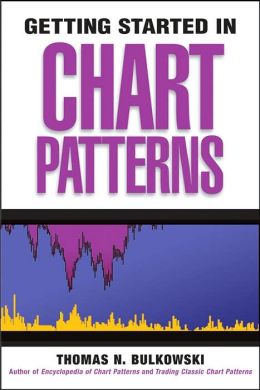
An accessible guide to understanding and using technical chart patterns
Chart pattern analysis is not only one of the most important investing
tools, but also one of the most popular. Filled with in-depth insights
and practical advice, Getting Started in Chart Patterns is designed to
help both new and seasoned traders profit by tracking and identifying
specific chart patterns. Expert Thomas Bulkowski opens with a basic
discussion of chart pattern formation and how bad habits can hurt
trading. He then moves on to introduce over 40 key chart formations as
well as numerous trading tactics that can be used in conjunction with
them. Readers will benefit from the specifics (actual trades with dollar
amounts) outlined throughout the book and the frank discussions of how
trading behavior can affect the bottom line. Anecdotes from Bulkowski's
own trading experiences are also included to shed light on how one of
the best in the business goes about trading with chart patterns.
Forum on trading, automated trading systems and testing trading strategies
Something Interesting to Read February 2014
Sergey Golubev, 2014.02.14 18:06
An Introduction to Probability Theory and Its Applications, Vol. 1, 3rd Edition
by William Feller

"If you could only ever buy one book on probability, this would be the one!
Feller's elegant and lateral approach to the essential elements of
probability theory and their application to many diverse and apparently
unrelated contexts is head-noddingly inspiring.
Working your way through all the exercises in the book would be an
excellent retirment diversion sure to stave off the onset of dementia."
Dr. Robert Crossman
============
MT5 Article about it related to trading :
Random Walk and the Trend IndicatorForum on trading, automated trading systems and testing trading strategies
Something Interesting to Read February 2014
Sergey Golubev, 2014.02.17 08:17
The Master Swing Trader by Alan Farley
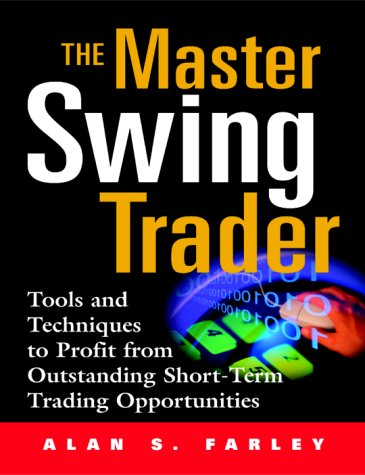
Today’s top market players understand that our "efficient" markets are
actually highly inefficient, driven by insiders with hidden agendas and
an irrational pack mentality that has little to do with underlying
value. Fortunately, this constant imbalance generates repeated,
high-probability trade setups—and Alan Farley’s The Master Swing Trader
reveals how you can find and profit from these difficult-to-spot
opportunities before they disappear.
Farley’s innovative system is based on Pattern Cycles—shifting market
stages that repeat in an orderly, predictable process through all price
charts and time frames. These classic Pattern Cycles:
- Describe the machine language within market opportunity
- Reveal the origin of the trade setup
- Explain how to capitalize on inefficiency through every bull and bear phase
- Show exactly where to uncover consistent profit opportunities
- Offer natural methods to shift tactics quickly as conditions change
- Predict the impact of the emotional crowd on trend, range, and price development
The Master Swing Trader will help you apply Pattern Cycles to your advantage, over and over again. By encompassing virtually all market action, and revealing how price moves in a highly predictable manner, its powerful tools will give you the edge you need to take other people’s money before they take yours.
Forum on trading, automated trading systems and testing trading strategies
Something Interesting to Read November 2014
Sergey Golubev, 2014.11.24 12:51
Trend Following (Updated Edition): Learn to Make Millions in Up or Down Marketsby Michael W. Covel
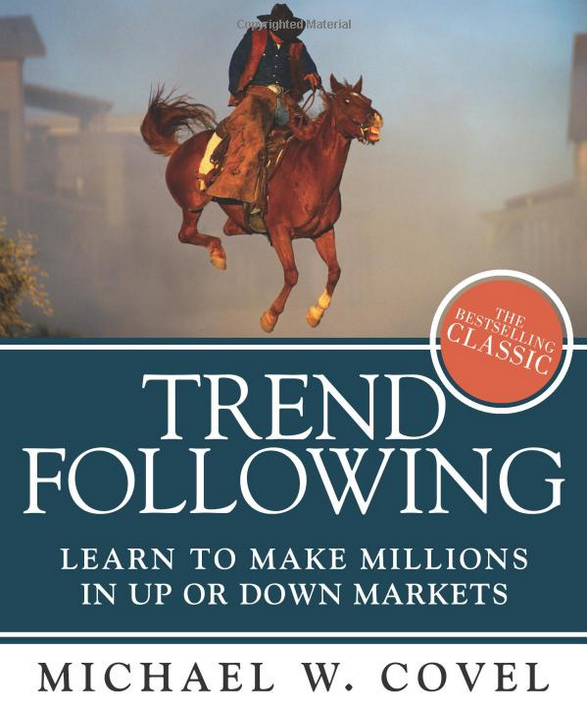
Discover the investment strategy that works in any market. The one strategy that works in up and down markets, good times and bad.
- ‘Trend Following’ has become the classic trading book — accepted by the great pro traders as their standard.. Learn how Trend Followers delivered fantastic returns while everyone else was losing their shirts.
-
Simple charts and instructions help you use Trend Following no matter where the market goes next.
Includes new profiles of top Trend Followers who’ve kept right on profiting through the toughest markets.
Forum on trading, automated trading systems and testing trading strategies
Something Interesting to Read August 2014
Muhammad Syamil Bin Abdullah, 2014.08.18 13:44
The Little Book Of Sideways Markets : How To make Money In Markets That Go Nowhere
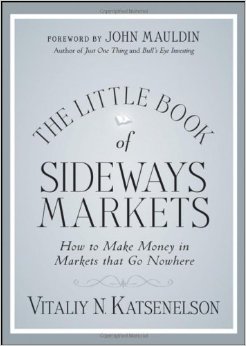
With the stock market turning into a roller-coaster ride of all-time highs and stomach-churning lows, where does that leave your portfolio? Pretty much back where you started in 2000. Which may be fine for visitors to Six Flags, but for your retirement, savings, and investments, you'd like to actually get somewhere.
In The Little Book of Sideways Markets, respected value investor and author Vitaliy Katsenelson shows you how to survive a stagnant market that's neither bull nor bear but instead what he calls a cowardly lion—it displays occasional bursts of bravado but is ultimately overcome by fear.
Katsenelson, known for the commonsense principles he has written frequently about in the Financial Times, Bloomberg Businessweek and elsewhere, decodes the theories and cuts to the chase with practical and timely strategies for how you can survive and thrive during a sideways market—a state of affairs, by the way, we should expect for the next decade. He'll show you:
- Why your investments will stall in neutral and what to do about it
- Why, despite its place as the Rodney Dangerfield of investing, you should treat mean reversion with respect
- Why Tevye was a rich man—and what you can learn from his purchase of Golde, the cow
- How the dire state of economic affairs in China and Japan will impact your investments, and what to do about it
- The three crucial concepts of value investing—Quality, Growth, and Valuation
- How focus on process, boring as it may sound, leads to success
- Why you should become a born-again value investor
- How to break bad habits and find, buy and sell stocks in a sideways market
Making progress in a sideways market is difficult, but the lively and entertaining Little Book of Sideways Markets will help you triumph even when the market is stalled.
Forum on trading, automated trading systems and testing trading strategies
Something Interesting to Read February 2014
Sergey Golubev, 2014.02.04 15:21
Trading Price Action Reversals : Al Brooks
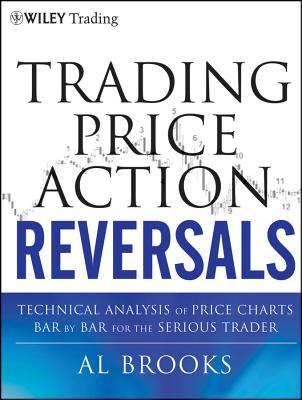
detailed guide to profiting from trend reversals using the technical analysis of price action
The key to being a successful trader is finding a system that works and
sticking with it. Author Al Brooks has done just that. By simplifying
his trading system and trading only 5-minute price charts he's found a
way to capture profits regardless of market direction or economic
climate. His first book, Reading Price Charts Bar by Bar, offered an
informative examination of his system, but it didn't allow him to get
into the real nuts and bolts of the approach. Now, with this new series
of books, Brooks takes you step by step through the entire process.
By breaking down his trading system into its simplest pieces:
institutional piggybacking or trend trading, trading ranges, and
transitions or reversals (the focus of this book), this three book
series offers access to Brooks' successful methodology. Trading Price
Action Reversals reveals the various types of reversals found in today's
markets and then takes the time to discuss the specific characteristics
of these reversals, so that you can use them in your everyday trading
endeavors. While price action analysis works on all time frames, there
are different techniques that you can use in trading intraday, daily,
weekly and monthly charts. This, among many other issues, is also
addressed throughout these pages.
- Offers insights on how to handle volatility and sharp reversals
- Covers the concept of using options when trading certain charts
-
Examines how to deal with the emotions that come along with trading
Other books in the series include Trading Price Action Trends and Trading Price Action Trading Ranges
If you're looking to make the most of your time in today's markets the
trading insights found in Trading Price Action Reversals will help you
achieve this goal.
================
Forum on trading, automated trading systems and testing trading strategies
Something Interesting to Read July 2014
Sergey Golubev, 2014.07.23 16:13
Technical Analysis of Stock Trends

2011 Reprint of 1958 Fourth Edition. Full facsimile of the original
edition, not reproduced with Optical Recognition Software. In 1948
Robert D. Edwards and John Magee published "Technical Analysis of Stock
Trends" which is widely considered to be one of the seminal works of the
discipline. It is exclusively concerned with trend analysis and chart
patterns and remains in use to the present. As is obvious, early
technical analysis was almost exclusively the analysis of charts,
because the processing power of computers was not available for
statistical analysis. "Technical analysis" is a financial term used to
denote a security analysis discipline for forecasting the direction of
prices through the study of past market data, primarily price and
volume. Behavioral economics and quantitative analysis incorporate
technical analysis, which being an aspect of active management stands in
contradiction to much of modern portfolio theory.
- Free trading apps
- Over 8,000 signals for copying
- Economic news for exploring financial markets
You agree to website policy and terms of use
This is the thread about books related for stocks, forex, financial market and economics. Please make a post about books with possible cover image, short description and official link to buy (amazon for example).
Posts without books' presentation, without official link to buy and with refferal links will be deleted.Posts with links to unofficial resellers will be deleted